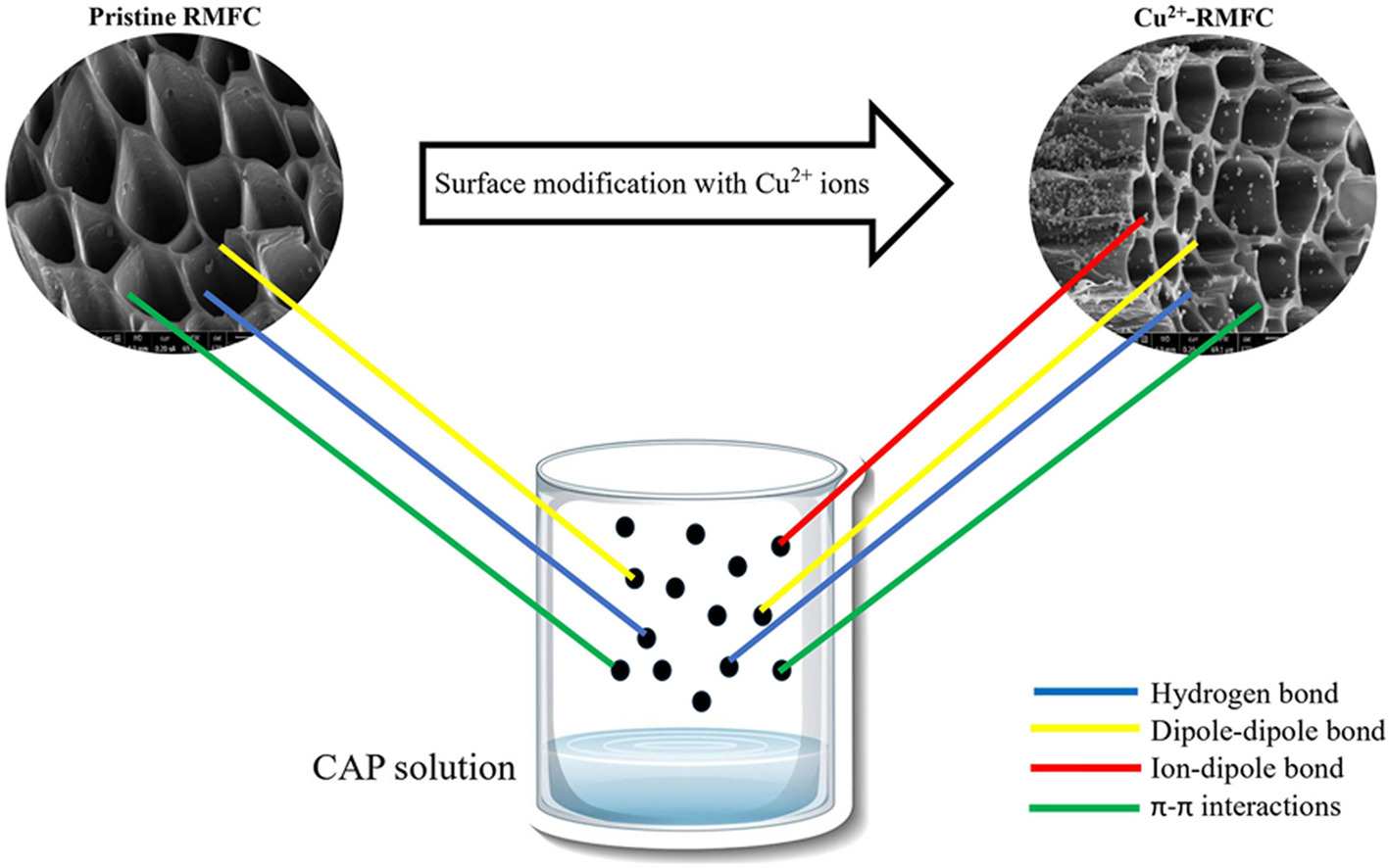• Optimized Cu2+-RMFC achieved CAP uptake of 76.15 mg/g and yield of 31.54 %.
• Modification with Cu2+ improved CAP uptake up to 50.06 % (30.40 % at pH 7).
• The Qm was 101.10 mg/g (linear method) and 108.00 mg/g (non-linear method).
• Hydrogen, dipole-dipole, π-π, and ion-dipole boosted CAP affinity for Cu2+-RMFC.
• Null hypothesis was accepted for isotherm models and rejected for kinetic models.
This study tackles the issue of chloramphenicol (CAP) in wastewater by exploring its removal using rattan waste-based metal functionalized carbon (RMFC). The study provides new insights into the adsorption mechanism by investigating the role of Cu2+ functionalization in enhancing CAP uptake through ion-dipole and π-π interactions. The RMFC surface was enriched with Cu2+ ions through modification with CuN2O6, resulting in the production of copper-enriched RMFC (Cu2+-RMFC). The conditions for preparing Cu2+-RMFC were optimized through response surface methodology (RSM). Following this, an F-test was conducted to evaluate the differences in variance distinguishing linear from non-linear approaches pertaining to isotherm together with kinetic models, with the null hypothesis proposing that these variances are the same. The adsorption capacities of CAP by pristine RMFC and Cu2+-RMFC were 53.69 mg/g and 77.14 mg/g, respectively, indicating a 30.40 % increase. Besides hydrogen bonds, dipole-dipole bonds, and π-π interactions, the enhanced CAP removal by Cu2+-RMFC was attributed to the ion-dipole interaction between Cu2+ ions and more electronegative oxygen (O) atoms in CAP molecules. The RSM identified the optimal conditions as 660 W, 8.07 min, and a metal loading ratio (MLR) of 0.47 g/g in relation to radiation power, duration of radiation, and MLR, correspondingly. These circumstances brought about predicted CAP uptake values of 76.15 mg/g (actual: 77.14 mg/g; error: 1.28 %) and a Cu2+-RMFC yield of 31.54 % (actual: 32.36 %; error: 2.53 %). The adsorption process was well represented by the non-linear Freundlich and non-linear pseudo-first-order (PFO) models. The adsorption capacity of the Langmuir monolayer (Qm) was 101.01 mg/g for the linear model and 108.00 mg/g for the non-linear model. The F-test results indicated that for all isotherm models studied, the F value was smaller than the F-critical value, leading to the acceptance of the null hypothesis. In contrast, the F values for all kinetic models exceeded the F-critical value, resulting in the refusal of the null hypothesis.

